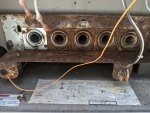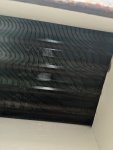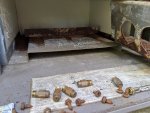I have an older Hayward H250 propane heater with electronic ignition that recently has been having problems with delayed ignition. That is, I can hear the gas valve open and the igniter clicking at the same time, but the gas doesn't ignite for a couple seconds, causing a louder ignition than normal. It starts this way most of the time, though occasionally it'll start normally with a gentler "whoosh" ignition.
I have measured outlet pressure of the gas value inside the heater, and it reads exactly 9 W.C. which is what the manual calls for. I replaced the igniter a few years ago, so I don't think that's the problem. I've even turned the pressure down to ~8.5 W.C. and it usually starts more gently.
I've taken out the burner tubes and cleaned them as best I can, which is basically just using a wire brush on the outside. I can't really clean then inside due to their design. There's a smaller inner tube inside the outer tube with the holes in it. I can hear some stuff rattling around in there but can't really get it out. Perhaps the tube nearest the igniter has some obstruction inside preventing gas flow to it?
Was hoping someone might have some troubleshooting tips to diagnose this type of problem. Thanks!
I have measured outlet pressure of the gas value inside the heater, and it reads exactly 9 W.C. which is what the manual calls for. I replaced the igniter a few years ago, so I don't think that's the problem. I've even turned the pressure down to ~8.5 W.C. and it usually starts more gently.
I've taken out the burner tubes and cleaned them as best I can, which is basically just using a wire brush on the outside. I can't really clean then inside due to their design. There's a smaller inner tube inside the outer tube with the holes in it. I can hear some stuff rattling around in there but can't really get it out. Perhaps the tube nearest the igniter has some obstruction inside preventing gas flow to it?
Was hoping someone might have some troubleshooting tips to diagnose this type of problem. Thanks!




